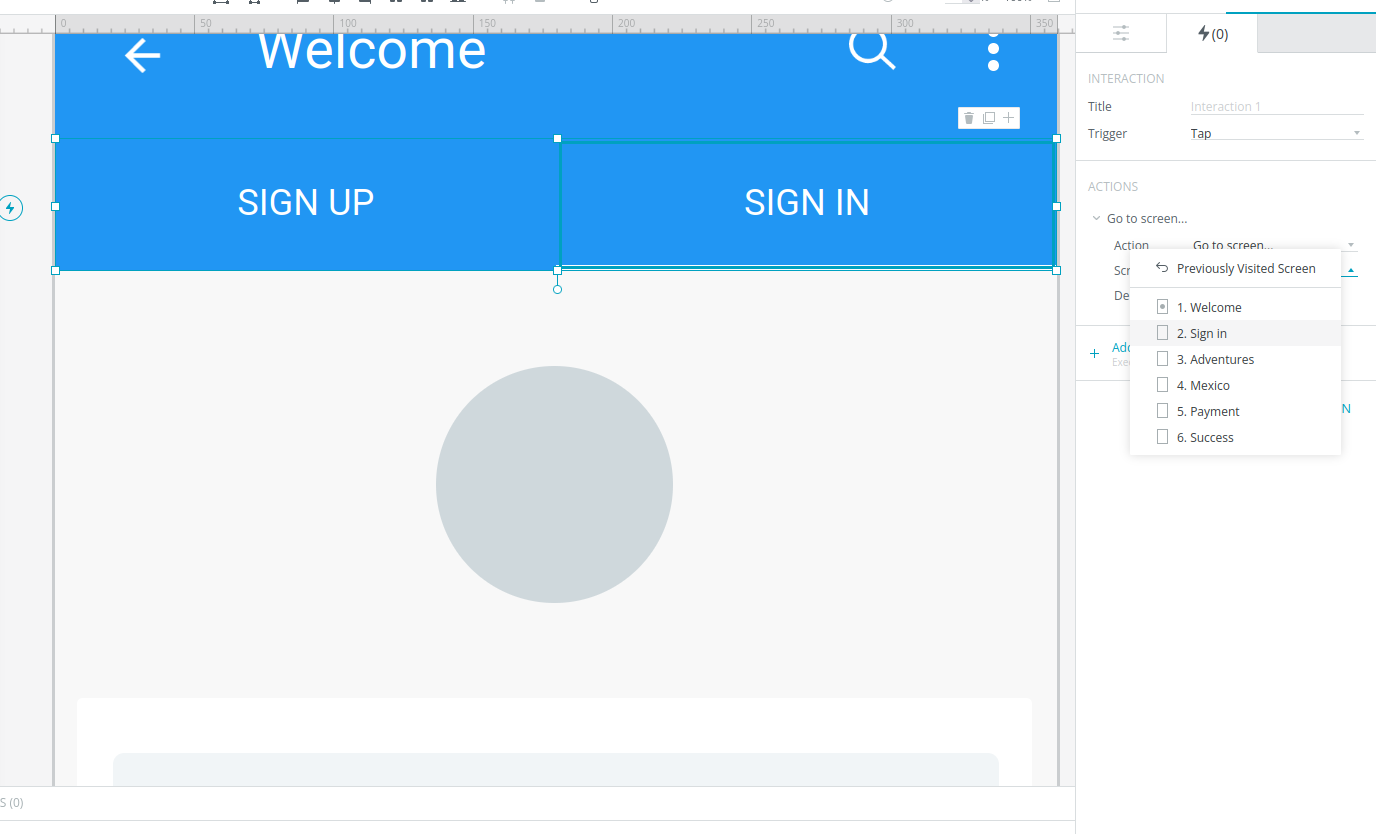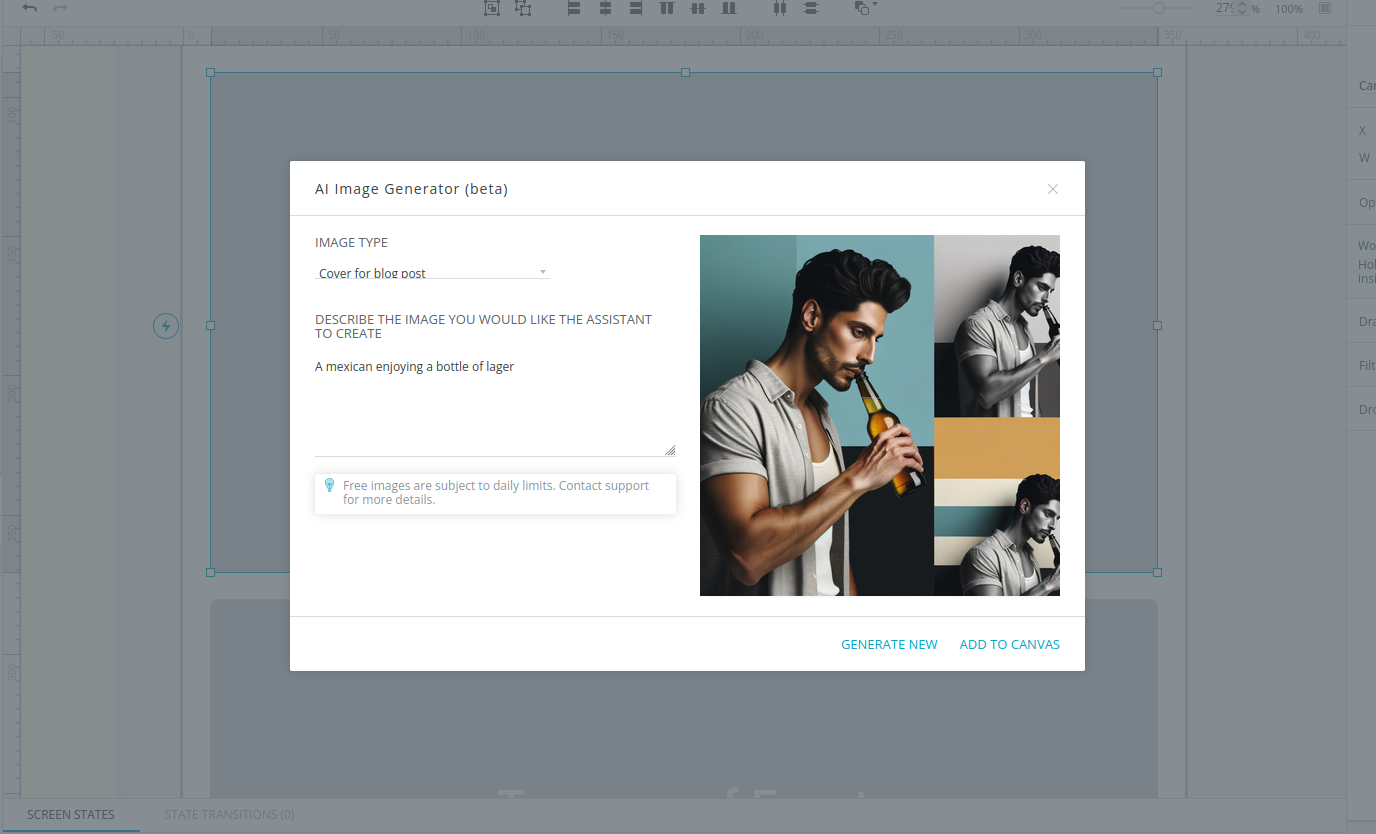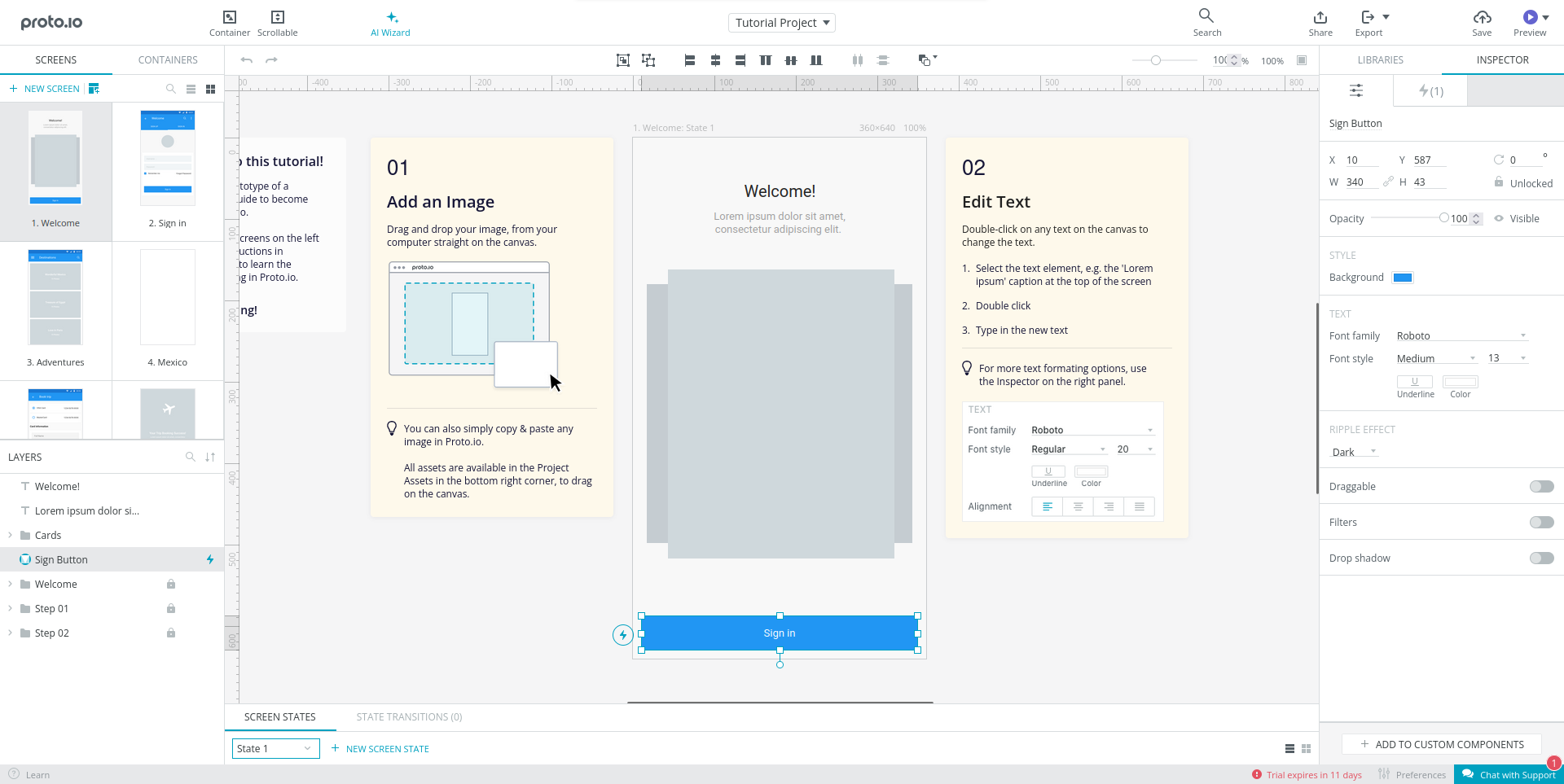TechRadar Verdict
Proto.io is a UX design tool that runs in your browser and boasts an incredible collection of features. While it is unsuitable for beginners, it is suitable for every aspect of the UX design workflow.
Pros
- +
Stable, feature-packed browser tool
- +
Easy to use editor
- +
Simple to get started with various templates
Cons
- -
More expensive than competition
- -
No generative AI feature
Why you can trust TechRadar
Competent, robust, and stable prototyping tools are plentiful, but you don’t always get the feeling they’ve been developed or tested by genuine UX and design experts.
Consequently, it’s easy to find yourself (or your team) signing up to the wrong software. Onboarding with a new tool, and finding your feet can be time consuming, and workflows can take time to adjust. That’s why it is important to ensure that the new prototyping tool you’re considering is right for you and your team.
Proto.io is an online UX design application, and runs in your browser window. It can support single or multiple users, and handles design for desktop and mobile screens.
Launched in 2011, Proto.io is owned by Protoio Inc, a US-based company with a European base in Cyprus. It has a good reputation among UX designers, and is used by many notable companies.
But how does it measure up against the competition? To find out, we evaluated Proto.io based on pricing, features, ease of use, and customer support.
Proto.io: Plans and pricing
Proto.io is aimed at professional users. While you can enjoy a free 15-day trial without a credit card, there is no long-term free option. Instead, four main plans are on offer.
The basic Freelancer option is $24 per month (annual payment only, $288) and covers a single user. You get 5 active projects, and unlimited reviewer access.
For $40 a month (annual payment, $480) the Startup package is for 2 users, 10 active projects, and unlimited reviewers.
The Agency option at $80 a month (annual payment, $960) is for 5 users and 15 active projects. The Corporate option, meanwhile, is $160 per month (which works out at $1920 a year) and accommodates 10 users and 30 active projects. Both of these options also allow unlimited reviewers.
In addition, a fifth plan, intended for enterprise level users, is also available. More information on that can be acquired on request.
Payment for Proto.io is via credit card or PayPal.

Proto.io: Features
Proto.io offers a collection of building, prototyping, and collaboration tools in its editor. Drag and drop building blocks, design plugins for Photoshop, Sketch, and other tools, along with integrations for the same tools and Adobe and Google fonts are just a hint of the compelling design features within.
The editor is 100% web based, supports keyboard shortcuts, includes rulers, grids, and customizable guides, and automatically backs up your work. The version control feature lets you roll back to any saved backup. There is also support for copying between projects.
Drilling down into the prototyping features, Proto.io offers configurable trigger actions, touch events and gestures, and a wizard for interactions. Other events for mouse, keyboard, and even the display can be triggered, with custom outcomes based on other elements, audio and video controls, animations, transitions, and more.
Prototypes can be shared for collaborative purposes, snapshots made for sharing, and share links created for testing platforms like Userlytics. As well as exporting prototypes into PDF documents and and PNG images, Proto.io supports embedding. For collaboration and workflow purposes, integration with Jira, Confluence, and Trello is provided.
Proto.io also offers a couple of “freebies,” customizable elements that can be downloaded and added to your designs.
Some generative AI can be found in Proto.io. The tool offers an AI wizard for creating placeholder images for your UX designs.

Proto.io: Ease of use
Developing a UX project with Proto.io is a little trickier than with some other tools. This speaks more to the sheer scale of features rather than a lack of them, however. Indeed, this is probably why the editor provides a collection of templates for you to start working on.
While the supporting materials and guides (see below) will guide you through, Proto.io is not for anyone new to UX. Its features are more in-depth than some of the alternatives, with everything from text formatting to specifying actions for individual elements. This is a tool for more than simple UX design – the complete user experience can be built from scratch.
The Proto.io AI Wizard is provided to help you easily find an image for your project. Blog post images, products, logos, and icons can be quickly generated for these purposes.
Proto.io: Customer support
If you run into trouble with your design, a collection of support resources can be found on the Proto.io website. A searchable Help Center lets you search for solutions to problems, while a User Guide provides helpful articles in a logical order. Some of these include videos, which can be found separately, grouped in a “Video Academy.”
Direct support can be enjoyed via the live chat box, found in the corner of the Proto.io editor. The response here is pretty quick, so should swiftly provide you with the answer you need. Alternatively, a support request can be logged on a dedicated web page.
Proto.io: The competition
Mockitt, Figma, UXPin, and many other UX design tools are available. Why would you opt for Proto.io ahead of any of these?
Well, you might consider the quality of the editor and the templates. Or you might assess the feature list and compare it against the competition. We think Proto.io matches these other offerings in this regard, although some of them are cheaper (or freemium).
You might also consider Proto.io’s list of clients, which includes Indiegogo, Nordstrom, and PayByPhone.
Proto.io: Final verdict
We were very surprised at the depth of what Proto.io can deliver as a web app. This is a desktop-standard UX design tool that you can run in Google Chrome, Microsoft Edge, or Mozilla Firefox. So, it is platform independent, too – just as long as your OS supports a compatible browser.
While the website can be accessed from a mobile device, it will warn you that some features are not supported. Desktops and laptops are advised.
With so many features, cross platform support, and considerable integrations and collaboration options, Proto.io really impressed. It may be more expensive that some of the alternatives, but it seems that this tool’s reputation is well deserved.
Christian Cawley has extensive experience as a writer and editor in consumer electronics, IT and entertainment media. He has contributed to TechRadar since 2017 and has been published in Computer Weekly, Linux Format, ComputerActive, and other publications. Formerly the editor responsible for Linux, Security, Programming, and DIY at MakeUseOf.com, Christian previously worked as a desktop and software support specialist in the public and private sectors.

